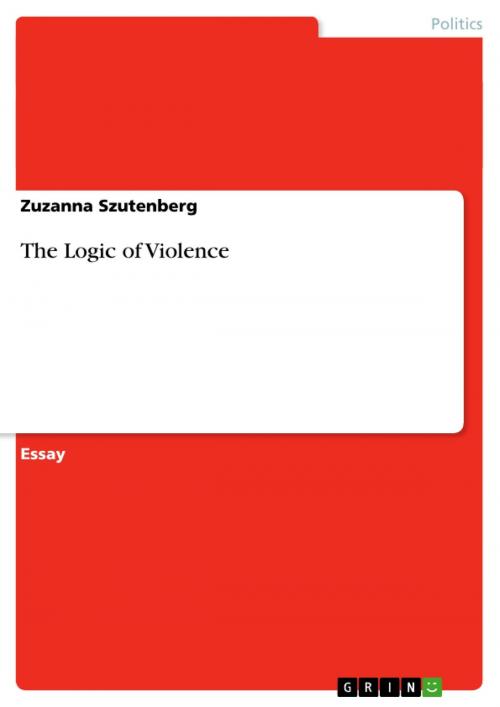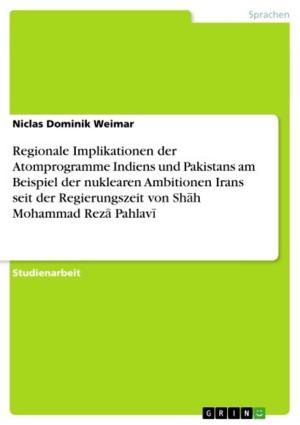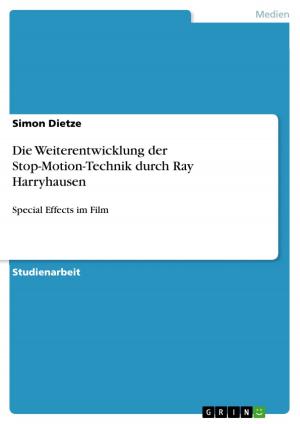| Author: | Zuzanna Szutenberg | ISBN: | 9783656316251 |
| Publisher: | GRIN Verlag | Publication: | November 21, 2012 |
| Imprint: | GRIN Verlag | Language: | English |
| Author: | Zuzanna Szutenberg |
| ISBN: | 9783656316251 |
| Publisher: | GRIN Verlag |
| Publication: | November 21, 2012 |
| Imprint: | GRIN Verlag |
| Language: | English |
Essay from the year 2012 in the subject Politics - International Politics - Topic: Public International Law and Human Rights, grade: 74 %, University of Hull (Law School), course: Human Rights Violations, language: English, abstract: QUESTION: Although the use of violence by and against states displays many features that are specific to particular cultures and situations, there is an underlying 'logic of violence' that takes a remarkably similar form in a multitude of different contexts. ABSTRACT: For the question at hand - a very complex question - it seems of paramount importance to disentangle its individual components before discovering its coherences. (...) I shall proceed as follows: First, I will present my understanding of logic - the underlying current giving this paper its direction and drive. Still in the first part, I shall introduce and define various forms of large-scale violence to be kept inside the epistemological frame of this essay. Secondly, this paper will elaborate on 'the doer behind the deed'. I shall introduce the philosophical traditions and formal features of contemporary states, laying the ground for the contemplation of violence by and against states, government-sponsored and stateperpetrated crime. Furthermore, to shed light on the ramifications of violence between the so called First and Third World and in order to provide a link between the general and the specific, this paper would expose the international involvement in criminal structures and violent agency. Drawing on the recurrent narratives and forms of violence discussed in the first two parts, the third section will deepen the dynamics of structures and resources that resurface in various contexts of large scale violence. The chosen examples will deal with the ambivalence of legal control and discursive power in their capacity as supportive features to instigate violence. This essay will conclude on contemplations which elude from a smooth narrative. In my conclusion I should summarize the main arguments and outline the implications resulting from the supposition of a logic of violence. The final part shall also provide an outlook to some of the many remaining challenges in the context of international human rights and supranational criminology and their pursuit to stop violence.
Essay from the year 2012 in the subject Politics - International Politics - Topic: Public International Law and Human Rights, grade: 74 %, University of Hull (Law School), course: Human Rights Violations, language: English, abstract: QUESTION: Although the use of violence by and against states displays many features that are specific to particular cultures and situations, there is an underlying 'logic of violence' that takes a remarkably similar form in a multitude of different contexts. ABSTRACT: For the question at hand - a very complex question - it seems of paramount importance to disentangle its individual components before discovering its coherences. (...) I shall proceed as follows: First, I will present my understanding of logic - the underlying current giving this paper its direction and drive. Still in the first part, I shall introduce and define various forms of large-scale violence to be kept inside the epistemological frame of this essay. Secondly, this paper will elaborate on 'the doer behind the deed'. I shall introduce the philosophical traditions and formal features of contemporary states, laying the ground for the contemplation of violence by and against states, government-sponsored and stateperpetrated crime. Furthermore, to shed light on the ramifications of violence between the so called First and Third World and in order to provide a link between the general and the specific, this paper would expose the international involvement in criminal structures and violent agency. Drawing on the recurrent narratives and forms of violence discussed in the first two parts, the third section will deepen the dynamics of structures and resources that resurface in various contexts of large scale violence. The chosen examples will deal with the ambivalence of legal control and discursive power in their capacity as supportive features to instigate violence. This essay will conclude on contemplations which elude from a smooth narrative. In my conclusion I should summarize the main arguments and outline the implications resulting from the supposition of a logic of violence. The final part shall also provide an outlook to some of the many remaining challenges in the context of international human rights and supranational criminology and their pursuit to stop violence.















